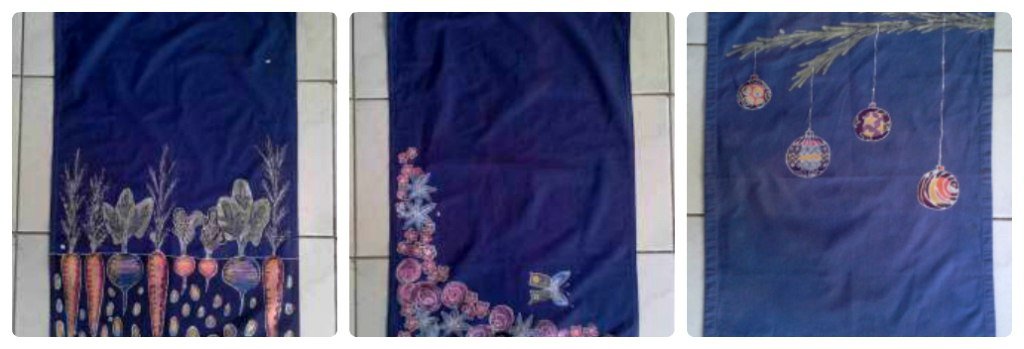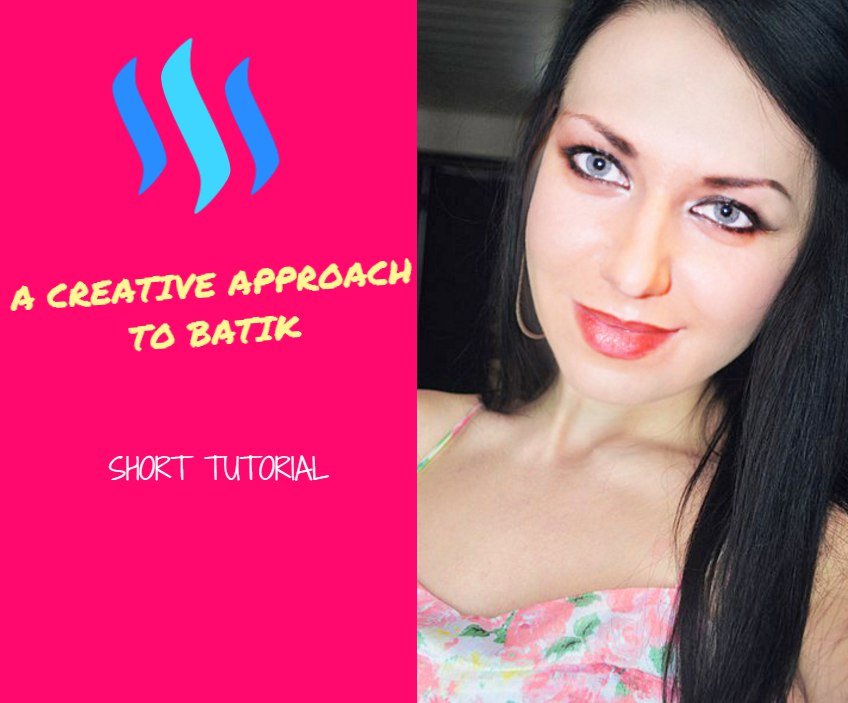
The process of making batik is quite a fun one. Though it can be frustrating when all the wax which is supposed to stay in tha pan ends up on the floor. It happened more than once to me. I guess my way of putting the pan is just not save, please don’t copy :)
It would be a much better solution, what they had at the place where I learned how to make batik. The pan had not a long handle like mine and it was surrounded by a wooden frame. So you would not just push against it by accident what I used to do with mine.
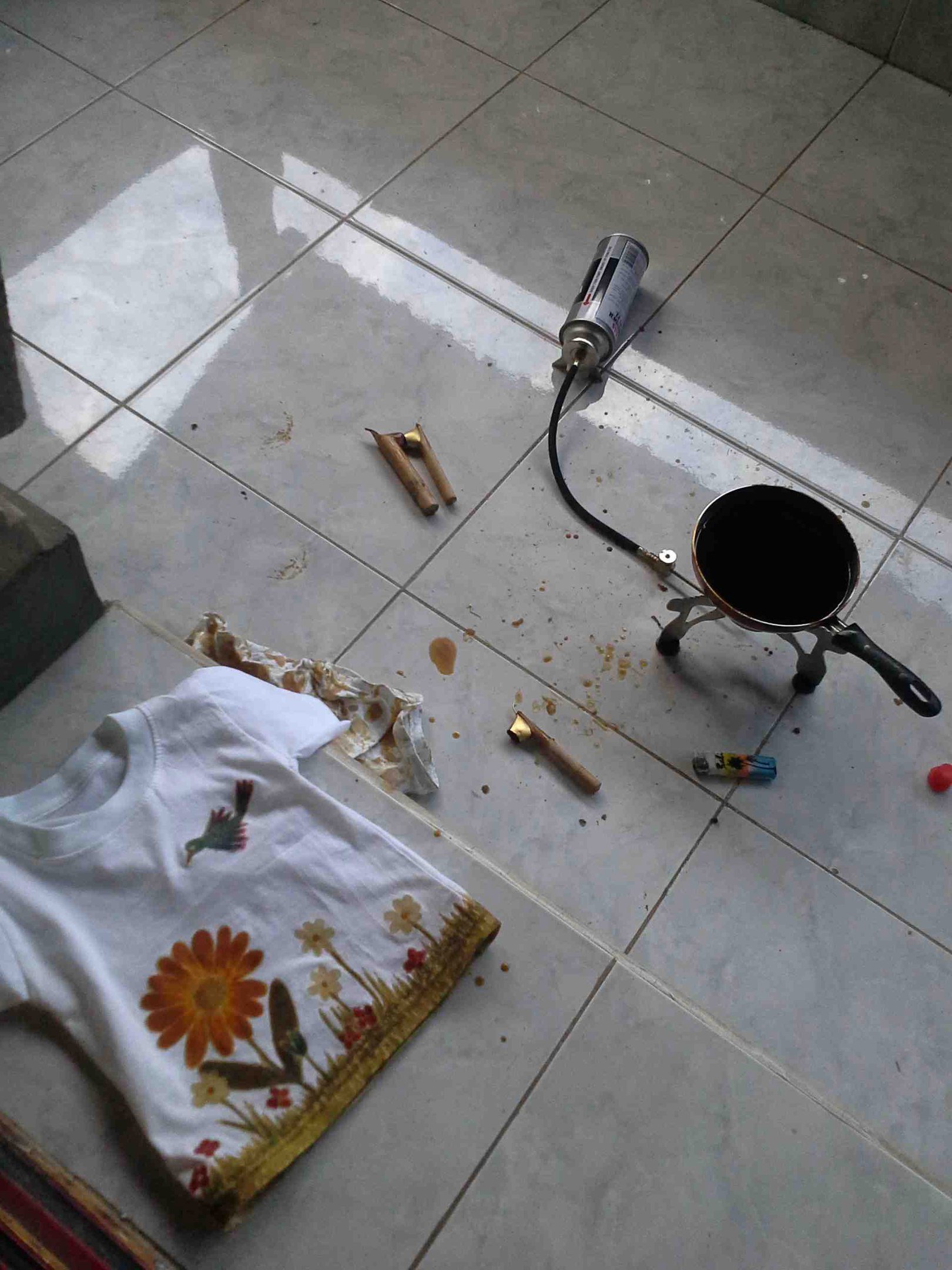
Nevertheless I still love working with hot wax a lot.
To start with you have to draw the motive with a pencil on the cloth.
After heating the wax you use a little metal can which is called canting or tjanting (speak: tschanting). There a variations for sale and I tried few of them and funny but true the cheapest and most simples turned out to work best for me.
So these ones I tried with not much success.
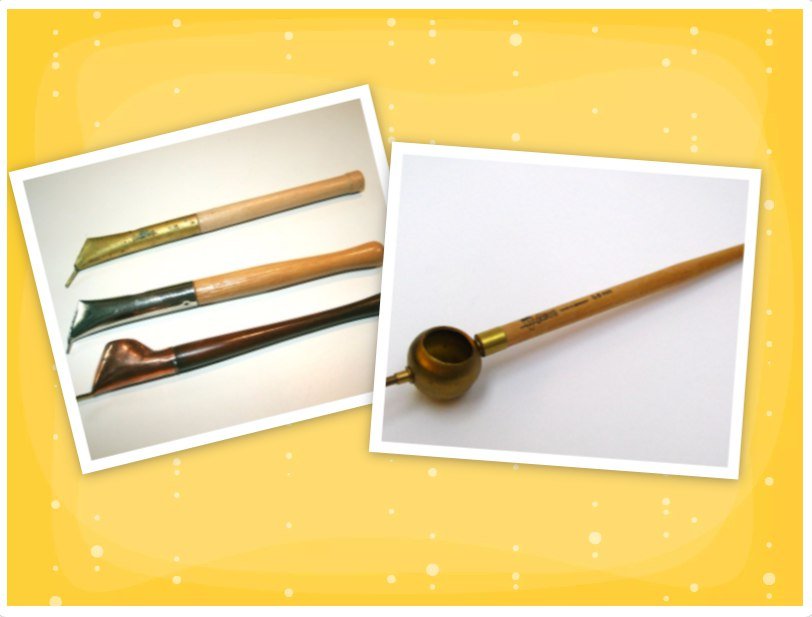
Here are some made out of bamboo and some of wood attached with a brass can with is very thin material, so it heats up very quickly. The wooden ones are the ones I use.
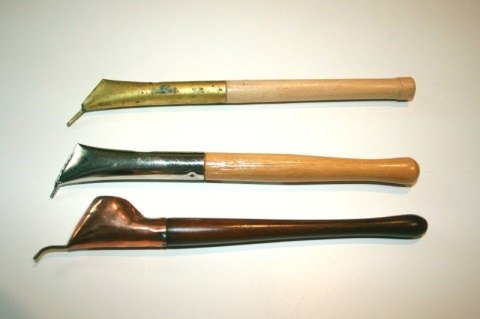
It took me a while not to make dots all over the place and every now and then it still happens but I guess this is the charm of batik, it doesn’t have to be perfect in my opinion.
Unfortunately I have no picture of just the wax on the cloth – I am intending to do a better job in documenting the process in the future!
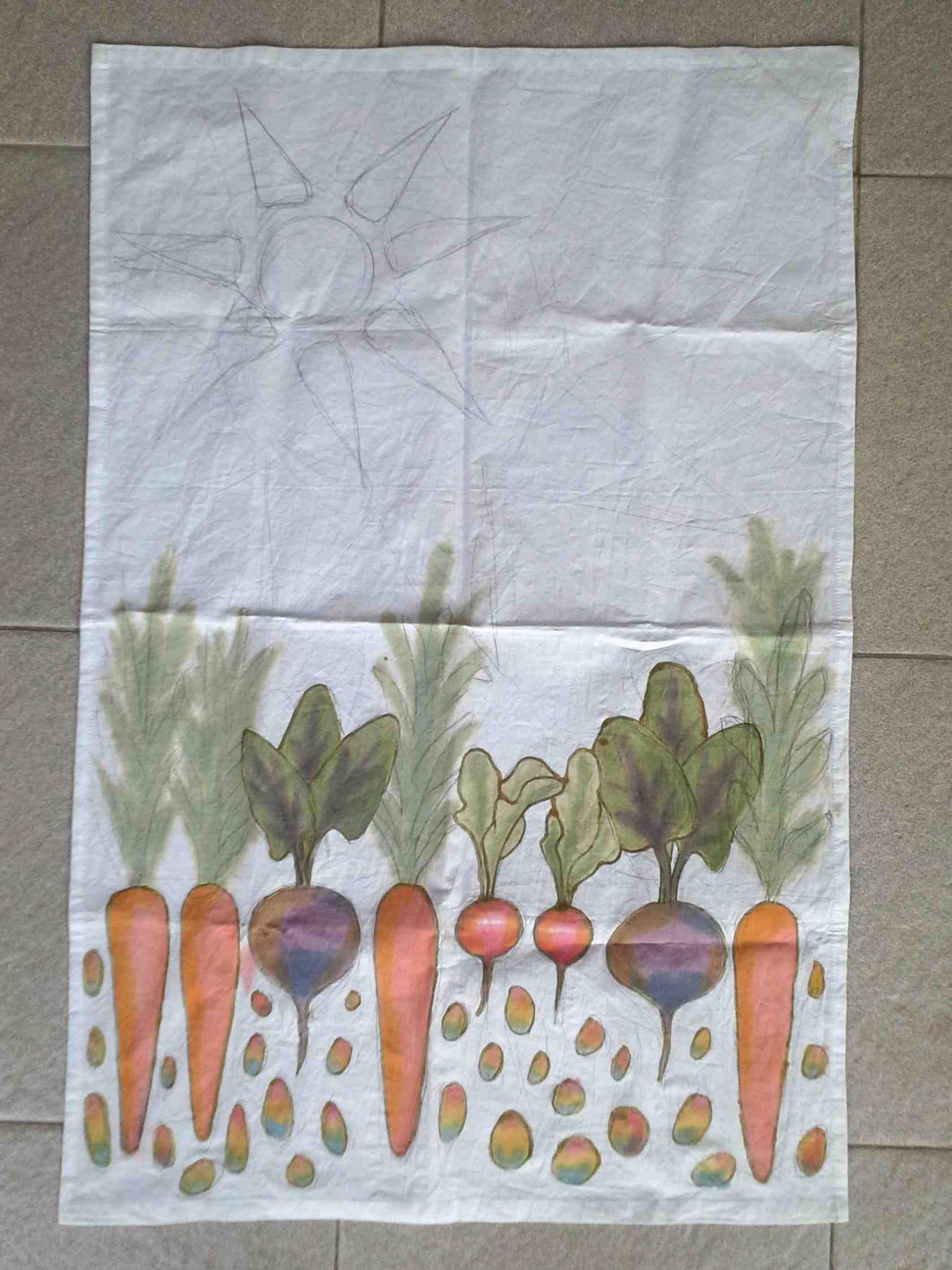


As again I don’t have the pictures I just explain what happens next:
- One more layer of wax is added on top of those colours which should stay the way they are now.
- Colours again and an other layer of wax.
- Then the whole cloth is dipped in a dye bath to cover all the rest which has no wax on it.
- After that the colours are dipped in a fixer.
Finally it is ready to get rid of all the wax. That happens when heated in hot water the best. I tried with iron it, but there is always some wax left on the cloth. I assume that depend on the wax mixture you are using. I was told the wax from Indonesia is a mixture of beeswax and coconut oil, so it is a very soft wax, giving hardly any cracks like if you would use paraffin wax which is very hard when dry and easily to crack.
So the cloth is dipped one more time in the fixer the colours which where underneath the wax also stay on the cloth.
